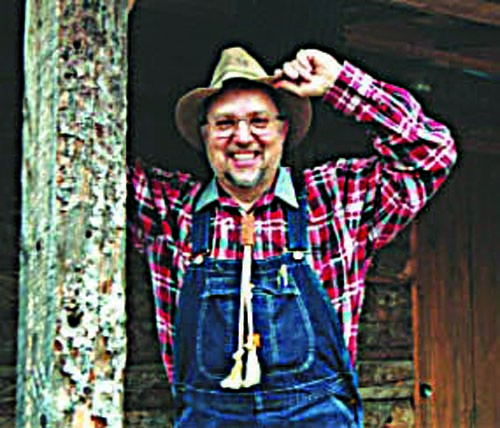When many folks see the word “gutbusters,” they might think of a joke that causes them to laugh really hard. Others might think of taking a hard right fist to the ol’ solar plexus. But, after reading an agricultural scientific article recently, I’m gonna give the name “gutbusters” to the scientists leading that research effort.
All this is a roundabout way to begin describing the research. Briefly, the research team is hunting ways to rejigger the billions of microbes in the gut of a poor 125-pound Holstein calf named “Sushi” so the innocent little global polluter won’t release planet-warming methane gas into the atmosphere during its lifetime.
The multi-year project, conducted at the Innovative Genomics Institute at the University of California–Davis, is budgeted for only $30-million. The scientists’ ultimate goal is to change the microscopic inner workings of bovine rumens so cattle quit ruminating and farting — which the esteemed scientists state contributes 30 percent of all global warming — more, they claim, than every airline flight across the world combined.
Here’s the research plan: Using tools that snip, transfer, and mix and match DNA, researchers plan to genetically engineer the untold number of microbes in Shushi’s guts to eliminate methane emissions.
Ah, but the plot thickens. It seems the bovine rumen has a dark side. It hosts single-celled organisms called archaea, which break down hydrogen and carbon dioxide, producing methane. Unable to process the gas, cows burp it up. Adding seaweed, oregano, or garlic to cow diets can cut methane emissions, but getting more than 1 billion free-ranging cattle to eat seaweed or garlic is logistically almost impossible.
Enter the Cal team of gene editors. They envision a kind of probiotic pill, given to the bovine at birth, that can transform its microbiome permanently. For four weeks, Sushi has been fed a few grams of oil distilled from red seaweed, one of the most tried and true methods to reduce the production of methane in cow stomachs. Over millions of years, the bovine microbiome has evolved to let the animals turn grasses and other cellulose sources into energy. They’re trying to whip evolution.
So, the scientists admit, permanently changing that microbial soup won’t be easy. The system is complex, and scientists have rarely successfully transformed the microbiomes of ruminants like cows, sheep and goats. But, they point out, there’s no reason a bovine has to produce methane. It’s simply a superficial byproduct of millions of years of evolution.
After flash-freezing the fluid from Sushi’s rumen, scientists extract the DNA. Then, they begin to reassemble the species in the rumen from the ground up. The ideal end result of this “microbial safari” would be a kind of early-life, life-long probiotic treatment for a cow.
There is still a long way to go. While scientists have proved that they can gene-edit microbes, researchers have so far only shown that they can edit a small fraction of the microbes in the cow gut — or the human gut, for that matter. Institute researchers are developing microbial gene-editing tools, even as they are mapping the species of the microbiome. They are sort of building the plane while flying it.
So, that’s the long and short of the research. Here’s my take on it: While I hope the team reaches it’s long-term goal to slow global warming from cattle, I really think it’s a $30-million boondoggle.
But, on the brighter side, if the research succeeds, and eventually scientists can re-formulate the microbiome in the guts of all animals, including the human ape, think how it nice it would feel to be a carefree, globally-responsible eater of Mexican food, or cauliflower, or cabbage, or prunes. Wouldn’t that be wonderful?
***
I’m not sure reading about planetary eating is making me any smarter. It’s sure not making me hungrier. I recently read that in some parts of the globe, raising and eating python snakes is catching on. It seems pythons are highly reproductive and highly efficient eaters. After a big meal, pythons just lie around growing, not using energy, for a few weeks before they need to eat again.
Maybe I shouldn’t jump to conclusions. I once ate rattlesnake meat and it was tasty, but I couldn’t get the picture of the rattlesnake out of my mind. It would probably be the same with python meat.
***
A few days ago at our morning Old Geezer’s Coffee Klatch, the topic turned to old-time crank telephones in rural areas. Many of us could still recall our telephone number. The crank number for the Yield family was two shorts and a long. That number will sound real weird for cell phone addicts.
We reminisced that every “party line” was sure to have some nosy folks who listened in on private conversations and then spread the gossip around the neighborhood.
I told the story about probably the shortest, most direct, party line conversation ever conducted. A fellow nicknamed “Duck” Drake wuz running a caterpillar on the Yield farm when he came and asked to use our party line. He called his bizness partner nicknamed “Duke” Ellington. Here’s the full conversation: “Duke! Duck! Outta gas!”
I also can remember being entranced as a little kid when I stood watching the telephone operator in the “Central Office” answering calls and deftly connecting wires on the big switchboard. She seemed like she wuz conducting magic to me.
***
Words of wisdom for this week from a bumper snicker: “I believe all politicians should wear a shock collar so that every time they tell a lie, we’d know it.”
Have a good ‘un.



